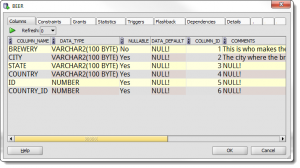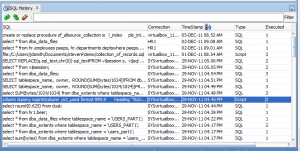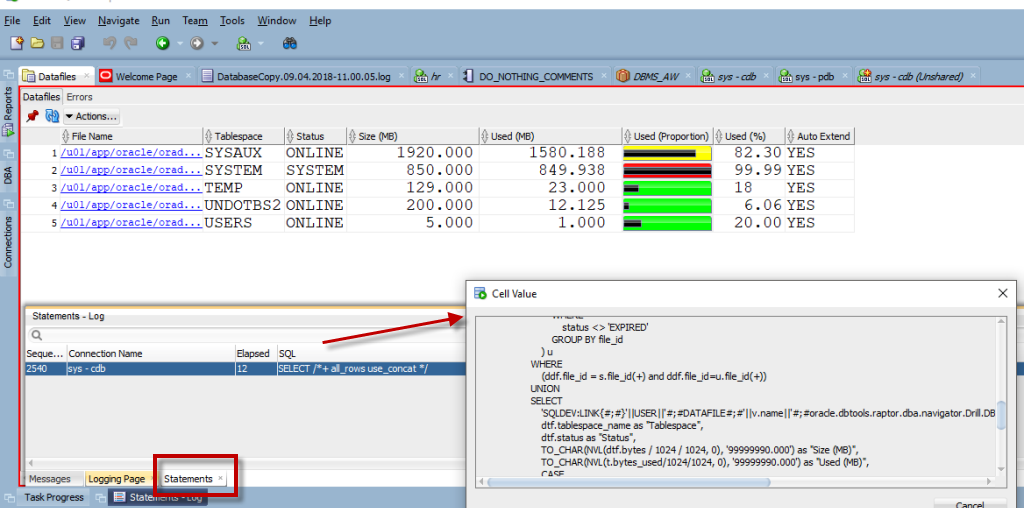Technical folks have a tendency to assume everyone is familiar with the words, abbreviations, acronyms, etc. that they causally throw out in conversations and the written word.
This is one of many things that can intimidate or dissuade the new folks from being able to participate in the conversation. I don’t want that to happen here, so I’ve compiled a short list of words, terms, and phrases that might help you navigate the available materials for Oracle SQL Developer.
So in no particular, although mostly alphabetical, order:
- CSV – comma separated values, one of the export formats supported in the data grids
- data grid – the spreadsheet looking space where data is displayed when running queries or viewing the contents of a table or view
- debugger – the Oracle package that allows you to step through and interact with your PL/SQL code
- DESC popup – DESC is short of ‘describe’, a SQL*Plus command we have enhanced in SQL Developer. Hitting Shift+F4 on an object in the worksheet will open a new window ‘popup’ that shows the definition of said object

- formatter – the engine that takes your SQL or PL/SQL text and arranges it such that keywords are aligned, uppercased, etc.
- object editor – if you open a database object from the tree, it is opened into an object editor, where it can be viewed or updated
- panel – a feature available from the VIEW menu that can be floated, or more traditionally docked, to the top, bottom, left, or right of the SQL Developer interface
- pin – a red ‘pushpin’ button, when pushed makes attached window persistent, e.g. pinning a table editor and then opening another table will result in a second table editor versus clobbering the original table

- procedure editor – object editor for PL/SQL objects including packages, procedures, functions, triggers, & types. This editor has an integrated debugger and formal execution output capture procedure versus the worksheet which runs only what you tell it to
- SQL history – a collection of previous SQL executed in the worksheet

- single record view – an index card or vertical type view of records in a data grid, available on any data grid context menu
- tree – the panel listing your database connections, which can be expanded to display nodes, e.g. tables, views, procedures, which can be further expanded to display the actual tables, etc.
- worksheet – opened by default when a database connection is established, this is where you can execute your SQL and PL/SQL
What terms are we missing?
Jeff, what’s that doohickey over there that does such-and-such? Ask away in the comments and I’ll add your terms to the list!








2 Comments
Query Builder – that other tab on the Worksheet that allows you to visually build a query using a drag and drop interface.
Autotrace icon – enabled in Worksheet toolbar after you enter a query
Explain Plan Icon – ditto
SQL Tuning Adivsor icon – ditto. really cool, but should be licensed for tuning pack and user needs ADVISOR system privilege.
not ‘should’ but ‘must!’ –> Do NOT use the SQL Tuning Advisor if you don’t have the Tuning pack licensed for that database
Great additions Kent!